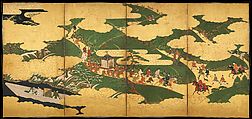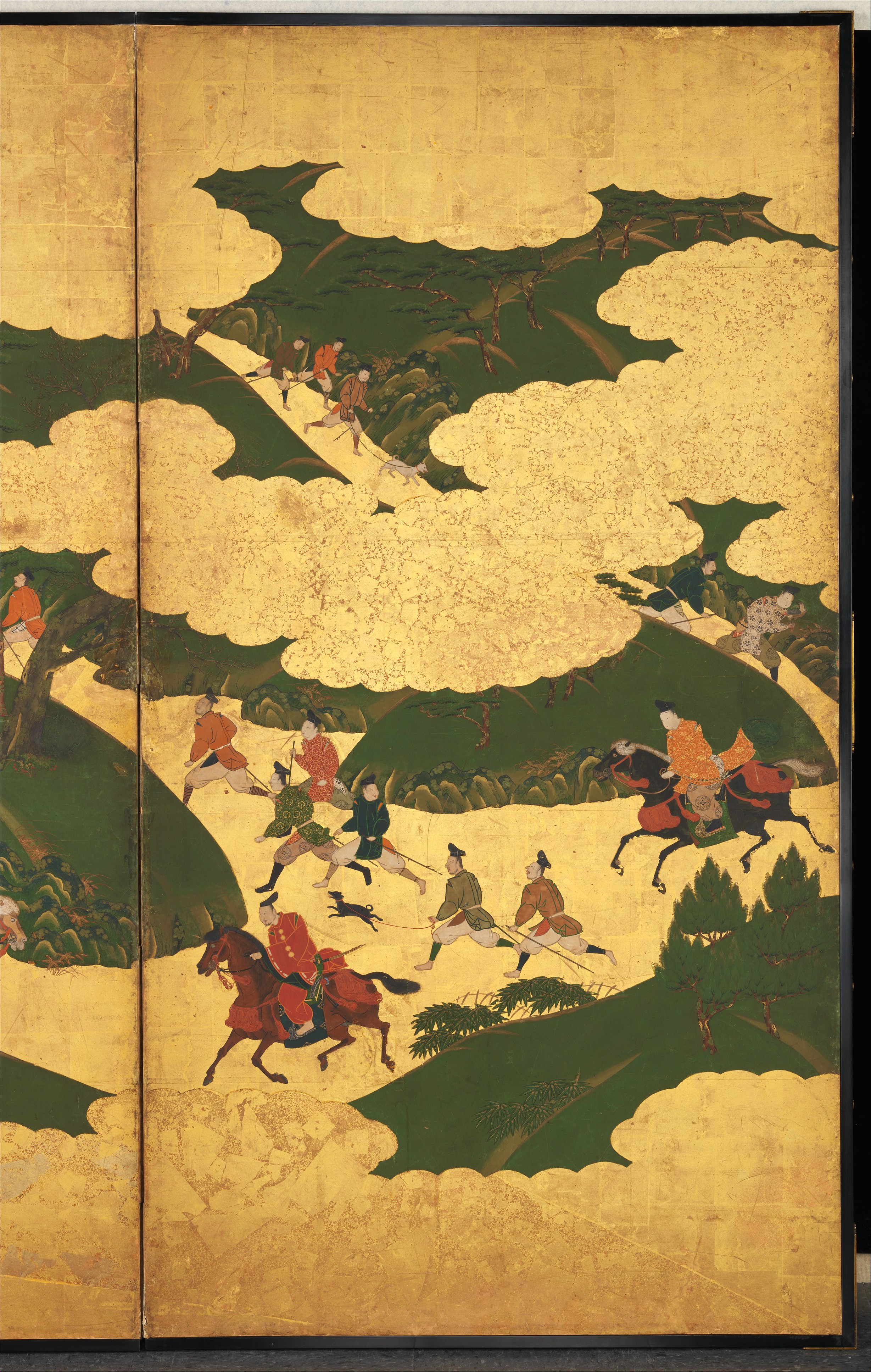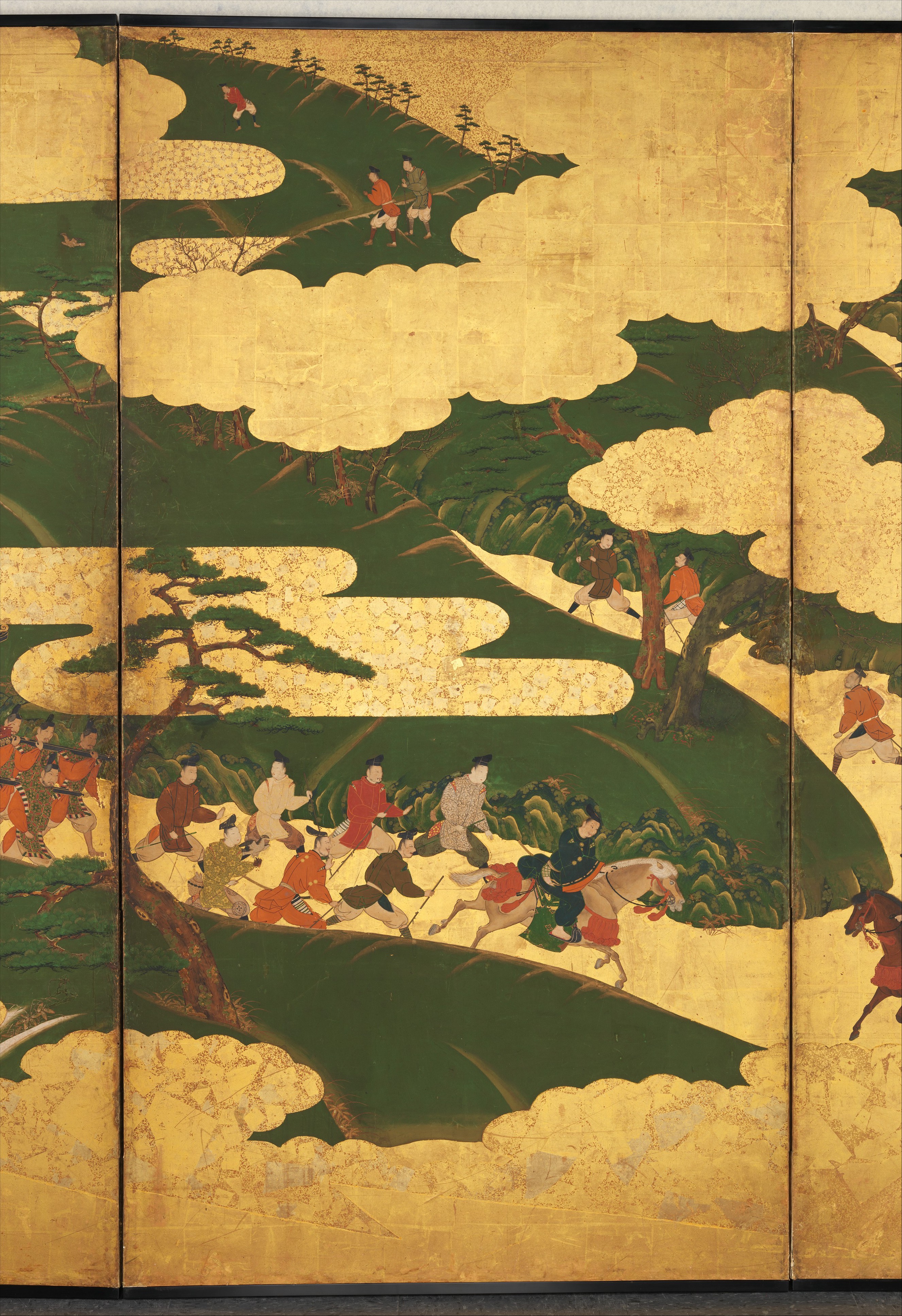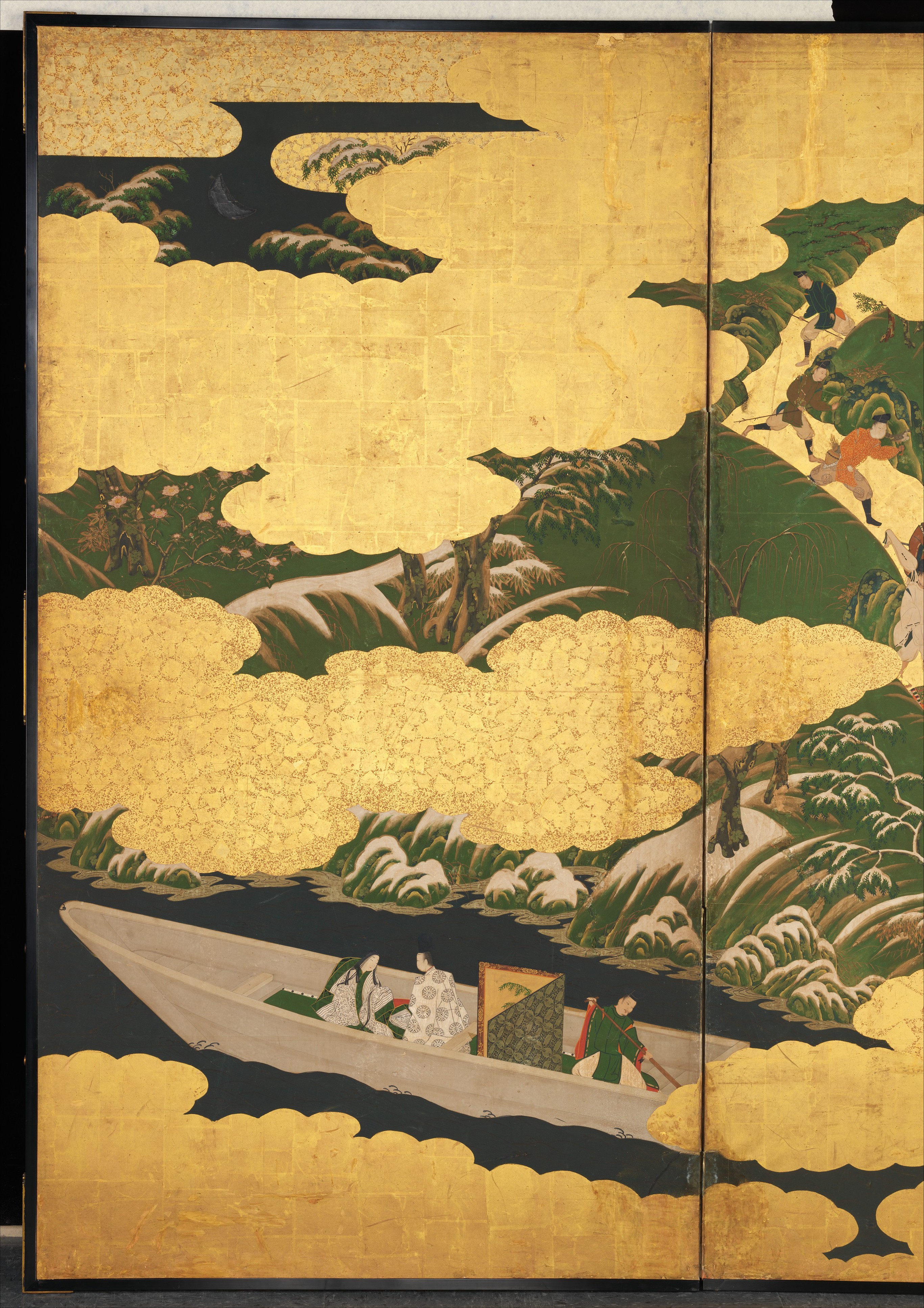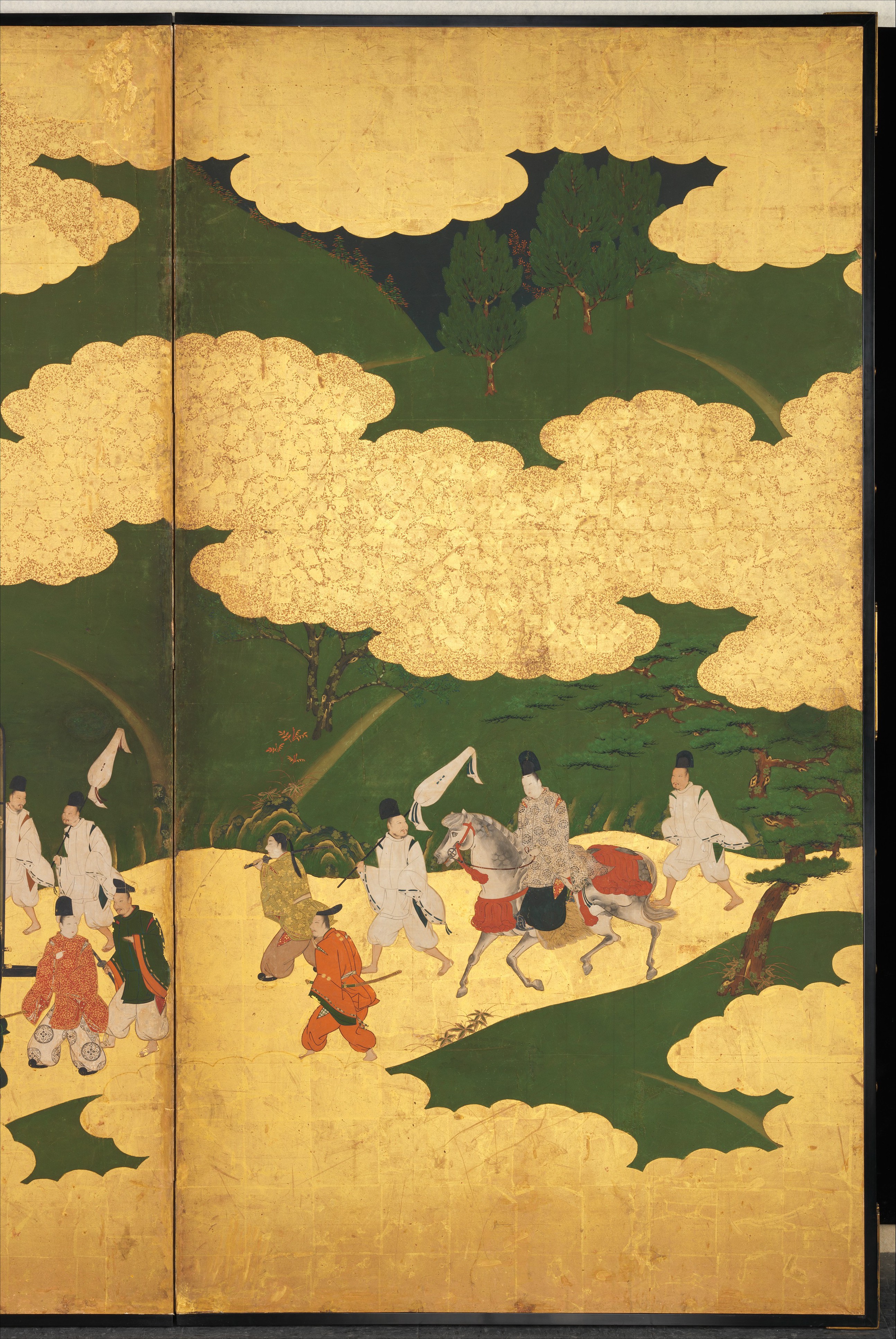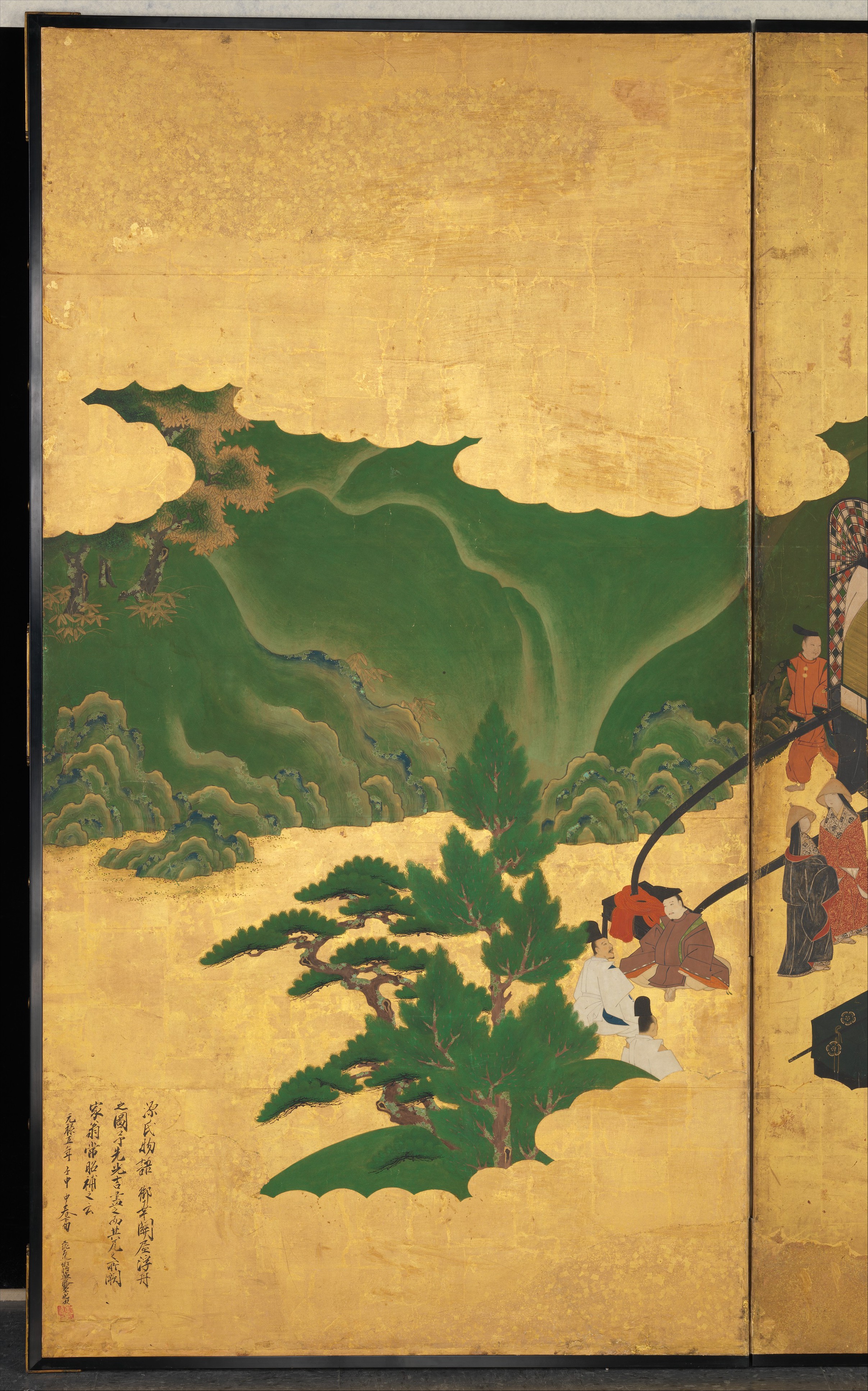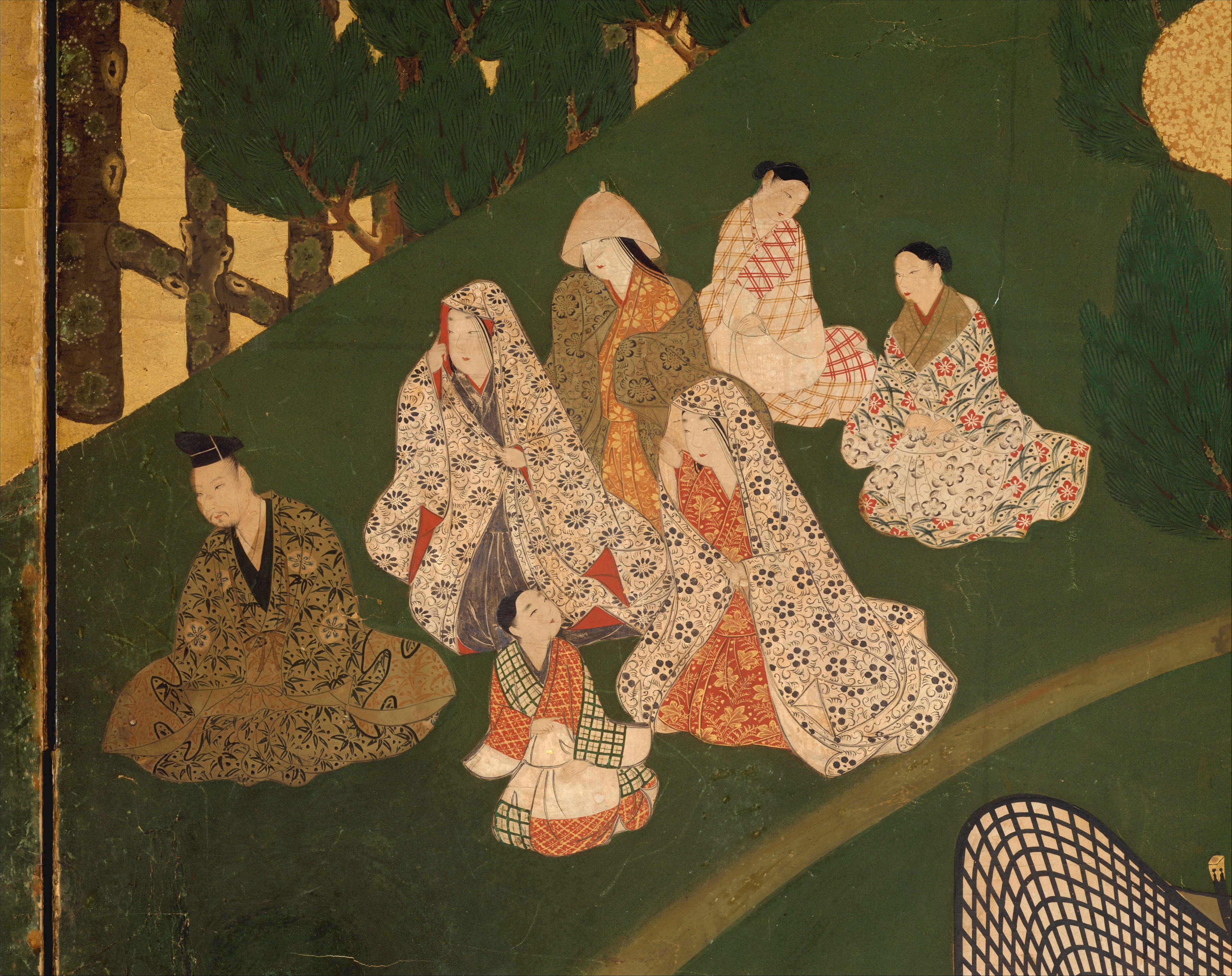“An Imperial Excursion” (Miyuki), “A Boat Cast Adrift” (Ukifune), and “The Barrier Gate” (Sekiya)
Tosa Mitsuyoshi Japanese
Not on view
Originally mounted on sliding-door panels, these screens once formed two walls of a Genji room. They demonstrate how Genji paintings, with their origins in small formats, were transformed into panoramic architectural programs, here depicting three outdoor scenes within a unified, expansive landscape. The dynamic composition and lavish use of gold epitomize the spectacular large-scale works commonly associated with Momoyama painting, while Tosa Mitsuyoshi’s fine craftsmanship and decorative tendencies are evident in the elaborate gold clouds, some of which contain the small squares of gold foil and gold dust characteristic of his miniature works. On the right is a falconry expedition by Emperor Reizei in Oharano. In the lower left corner is the famous scene of Ukifune and Niou traversing the Uji River in a boat.
Due to rights restrictions, this image cannot be enlarged, viewed at full screen, or downloaded.
This artwork is meant to be viewed from right to left. Scroll left to view more.
